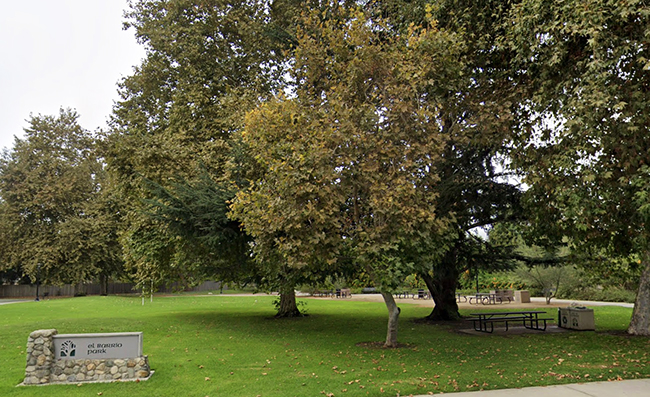Demystifying Sustainability: Food scraps and AAA batteries
by Freeman Allen
In our February article, we reported that a team of 5 students in the Environmental Analysis Program at Pomona College was working with city staff and community members to research options for increasing diversion of solid waste in the city from landfills. Options being considered were focused on food scrap diversion, including composting and possibly anaerobic digestion.
Nearly 30 percent of landfill content from Claremont is from food scraps, a resource that should be recycled to our natural environment.
The team turned up some exciting possibilities. At Claremont McKenna College, Brian Worley, director of facilities and campus services, is using a “food waste dehydrator” to handle all the food waste from their dining hall, including bones and paper waste. The food waste is heated to 180 degrees and churned for about 18 hours in a well-insulated machine the size of a large refrigerator that removes about 90 percent of the mass as pure water, and leaves a sterile, fluffy tan residue with a mild, agreeable odor. This material is bagged and taken to the college food gardens, where it is mixed with compost to be used as a slow-release fertilizer (N,P,K composition about 11,1,2).
What if we had machines such as this, perhaps shared, for our restaurants and other major sources of food waste? I would like to have some of that fertilizer product for my own garden and fruit trees –perhaps all the product could be used locally. The cost of purchase and operation might be offset by the savings achieved through fewer trips to the landfill. A longer-term green benefit would address that environmental juggernaut, global warming. Decomposing trash releases significant amounts of methane—a potent greenhouse gas. Less trash going into the landfills means less methane, and a happier atmosphere.
What a win, win, win situation!
This Friday, Sustainable Claremont will be meeting with representatives of Somat, the manufacturers of the food dehydrator currently used at CMC. Last week, we met with makers of BioGreen360, a similar machine that further digests the waste with aerobic microorganisms. We will continue to learn more about this technology, and promise to report back to the community what we learn, and how we might one day recycle 90 percent of Claremont’s table scraps. Our planet-protecting brethren at Claremont-based Uncommon Good have taken things a step further and agreed to test a truckload of BioGreen360’s fertilizer product to improve the soil on one of the nonprofit’s social justice urban farms. We’ll be interested to learn the results.
That said, we need more community involvement to determine the broad viability of this powerful technology. If you have thoughts about using one of these solid waste recyclers for handling Claremont’s food waste, or if you would like to learn more, please let us know at info@sustainableclaremont.org.
Helping the Energizer Bunny
While on the subject of solid waste, I’m tempted to share what I have been slow to learn about household batteries–the typical AA and AAA alkaline batteries used in so many gadgets such as flashlights and remote controls. I’ve been buying these use-it-once-and-discard batteries for years, collecting the dead batteries in a plastic bag, and every year or so taking them to a hazardous waste disposal facility. What a nuisance.
With my television set, I use wireless headphones so that I can watch Charlie Rose at midnight without disturbing anyone–well, actually, I like to record the program and watch when I can stay awake. For this I use rechargeable batteries, since they have to be renewed every few days. At one time, I used NiCd batteries but they are a big problem if they get into landfills (cadmium is toxic), and they don’t have as much stored power as the alkaline batteries. In recent years, I switched to nickel-metal hydride (NiMH) batteries that avoid the toxicity problem, but they lost their charge in under a year, even if not used, so I didn’t switch to NiMH rechargables for things like flashlights and remote controls.
Then, a few months ago, I noticed Costco had a huge stack of alkaline AA and AAA batteries for sale, but also a small corner with rechargeable NiMH batteries that hold their charge for 3 years. These use a newer “low self discharge” (LSD) technology. Wow, I thought, just what I need for those other gadgets.
So I looked into their capacity compared to the alkaline batteries–just about the same! I couldn’t find any reason not to switch, so now I have – and I’ve been at least 5 years late in discovering this great option! Costco sells AAA batteries in packs of 48 at about 3 for a dollar (surprisingly, the larger AAs are cheaper!). For a pack of 4, the more common size package, the cost is about a dollar per battery. The rechargeables are less than 5 cents per recharge, and recharge is easy in a 6-hour charger about the size of a pack of cigarettes that holds 4 each of the AAs and AAAs. It’s so much more convenient than keeping a supply of alkaline batteries, storing the dead ones and then carting them to the toxic waste disposal center. And I like the cost savings.
Why didn’t I catch on earlier?
Demystifying Sustainability is a project of Sustainable Claremont (sustainableclaremont.org), Email address: info@sustainableclaremont.org.
Follow us on Facebook at: facebook.com/sustainableclaremont and on Twitter @GreenClaremont








0 Comments